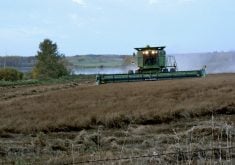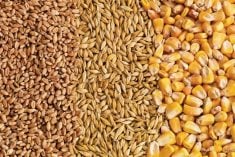By Mark Weinraub
CHICAGO, July 7 (Reuters) – U.S. crop conditions held steady, with soybean ratings at a 20-year high and corn ratings at a 15-year high, during the past week with ample soil moisture and warm weather providing near ideal conditions for growth.
The U.S. Agriculture Department’s weekly crop progress and conditions report released on Monday afternoon pegged the soybean crop as 72 percent good to excellent and corn at 75 percent good to excellent.
The ratings matched analysts’ forecast.
The report reinforced expectations that the corn crop was thriving as it enters its pollination phase, a key period of development that is critical for determining final yields. Corn uses large amounts of water during pollination.
Read Also

Canadian trade data delayed by U.S. government shutdown
Canadian international trade data for September will be delayed indefinitely due to the ongoing partial shutdown of the United States government, Statistics Canada said Friday, Oct. 24.
The good crop conditions have weighed on futures prices during the past few weeks as each ratings report has bolstered expectations of a bumper harvest in the fall.
New-crop November soybean prices have fallen 8.6 percent since the start of June while new-crop December corn was down 11.2 percent.
Good-to-excellent ratings for corn were above average in major production states such as Illinois, Iowa and North Dakota. Corn ratings lagged the national average in Nebraska and Kansas.
For soybeans, North Dakota recorded the highest good-to-excellent ratings, at 80 percent, of the major producers. Soybean ratings in Minnesota and Kansas fell below the national average.
USDA also said that spring wheat ratings were 70 percent good to excellent, unchanged from a week ago. Winter wheat was rated 31 percent good to excellent, one percentage point higher than a week earlier, and the crop was 57 percent harvested.














